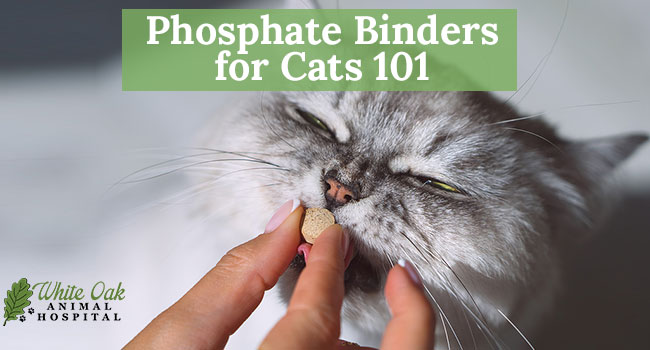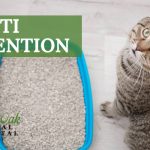
Kidney health is a growing concern among cat owners, with many seeking ways to ensure their feline companions lead long, healthy lives. One of the most effective tools in this regard is phosphate binders for cats. Phosphate binders play a crucial role in managing phosphorus levels, which is essential for preventing kidney disease and maintaining overall feline health. Elevated phosphorus levels can lead to serious complications, including chronic kidney disease (CKD), which is increasingly common in older cats. As a result, the need for effective solutions like phosphate binders has never been more urgent.
Understanding Phosphate Binders
What Are Phosphate Binders and How Do They Work?
Phosphate binders for cats are substances that help reduce the absorption of phosphorus from the digestive tract. When your cat consumes food, the phosphorus in it can be absorbed into the bloodstream. Excessive phosphorus in the blood can strain the kidneys, leading to serious health issues. Phosphate binders work by binding to the phosphorus in the food before it can be absorbed, allowing it to pass harmlessly through the digestive system. This process is crucial for cats, especially those with compromised kidney function, as it helps prevent further kidney damage.
Why Managing Phosphorus Levels Is Critical
 Managing phosphorus levels is vital for maintaining your cat’s kidney health. High phosphorus levels can accelerate the progression of CKD, a condition that affects a significant percentage of older cats. Phosphate binders for cats are an essential part of the management strategy, helping to control phosphorus levels and slow down the deterioration of kidney function. By preventing the absorption of excess phosphorus, phosphate binders reduce the workload on the kidneys, thereby helping to preserve kidney function and prolonging your cat’s life. This management is particularly important for cats diagnosed with early-stage kidney disease, where controlling phosphorus levels can make a significant difference in the disease’s progression.
Managing phosphorus levels is vital for maintaining your cat’s kidney health. High phosphorus levels can accelerate the progression of CKD, a condition that affects a significant percentage of older cats. Phosphate binders for cats are an essential part of the management strategy, helping to control phosphorus levels and slow down the deterioration of kidney function. By preventing the absorption of excess phosphorus, phosphate binders reduce the workload on the kidneys, thereby helping to preserve kidney function and prolonging your cat’s life. This management is particularly important for cats diagnosed with early-stage kidney disease, where controlling phosphorus levels can make a significant difference in the disease’s progression.
Phosphate Binders for Cats: Exploring the Options
Types of Phosphate Binders
 When it comes to phosphate binders for cats, several options are available, each with its unique benefits. The most common types include aluminum-based binders, calcium-based binders, and non-calcium-based binders.
When it comes to phosphate binders for cats, several options are available, each with its unique benefits. The most common types include aluminum-based binders, calcium-based binders, and non-calcium-based binders.
- Aluminum-Based Binders: These are effective in reducing phosphorus levels but must be used cautiously due to the potential for aluminum toxicity over long-term use.
- Calcium-Based Binders: These binders are widely used and effective but may contribute to hypercalcemia if not monitored carefully.
- Non-Calcium-Based Binders: These newer binders, such as sevelamer, do not contribute to calcium levels, making them a safer option for long-term use.
Choosing the right type of phosphate binder depends on your cat’s specific needs, existing health conditions, and the advice of your veterinarian.
 Prescription vs. Over-the-Counter Phosphate Binders
Prescription vs. Over-the-Counter Phosphate Binders
Phosphate binders for cats are available both as prescription medications and over-the-counter (OTC) products.
- Prescription Phosphate Binders: These are usually recommended for cats with diagnosed kidney issues and are often more potent and tailored to specific medical needs. Veterinarians can provide guidance on the correct dosage and monitor your cat for any side effects.
- Over-the-Counter Phosphate Binders: OTC options can be useful for managing mild cases or as a preventive measure. However, they may not be as effective as prescription options, especially in cats with significant kidney damage.
Deciding between prescription and OTC phosphate binders for cats should be done in consultation with your veterinarian, who can assess your cat’s specific condition and recommend the most appropriate treatment.
Benefits of Phosphate Binders in Feline Health
Kidney Disease Prevention and Management
Phosphate binders for cats are instrumental in preventing and managing kidney disease. By reducing the absorption of phosphorus, these binders help to slow the progression of CKD, which is vital for maintaining your cat’s quality of life. Early intervention with phosphate binders can significantly delay the onset of severe kidney damage, giving your cat a better chance at a longer, healthier life.
 Overall Health and Well-being
Overall Health and Well-being
Beyond kidney health, phosphate binders for cats contribute to overall well-being by maintaining balanced phosphorus levels, which are crucial for various bodily functions. Cats on a consistent regimen of phosphate binders often exhibit improved energy levels, better appetite, and a general sense of well-being. Maintaining optimal phosphorus levels can also prevent secondary health issues, such as bone disorders and cardiovascular problems, further enhancing your cat’s quality of life.
How to Administer Phosphate Binders to Your Cat
Practical Administration Tips
 Administering phosphate binders for cats can be straightforward with the right approach. Phosphate binders come in various forms, including powders, liquids, and tablets, each suited to different administration methods.
Administering phosphate binders for cats can be straightforward with the right approach. Phosphate binders come in various forms, including powders, liquids, and tablets, each suited to different administration methods.
- Powdered Binders: These can be easily mixed into your cat’s food. Start by sprinkling a small amount and gradually increase the dosage as your cat gets accustomed to the taste.
- Liquid Binders: These can be added to wet food or administered directly using a syringe. Ensure that your cat consumes the full dosage for maximum effectiveness.
- Tablets: If your cat is comfortable with tablets, they can be given directly or crushed and mixed with food.
Making the Process Easier and More Effective
To improve compliance, consider introducing phosphate binders gradually, allowing your cat to adapt to the new addition to their diet. Flavored options can also make the binder more palatable. Consistency is key, so establishing a routine that fits seamlessly into your cat’s feeding schedule is essential. If your cat shows resistance, consult your veterinarian for alternative forms or methods of administration.
Monitoring Your Cat’s Health While Using Phosphate Binders
 The Importance of Regular Veterinary Check-Ups
The Importance of Regular Veterinary Check-Ups
Monitoring your cat’s health is crucial when using phosphate binders for cats. Regular veterinary check-ups, including blood tests, are essential to ensure that phosphorus levels are being effectively managed and that the binder is working as intended. These check-ups also allow for early detection of any potential side effects or the need for dosage adjustments.
Signs That May Indicate Dosage Adjustments
It’s important to watch for signs that may indicate the need to adjust the dosage of phosphate binders for cats. Symptoms such as lethargy, poor appetite, vomiting, or changes in urination patterns can signal that the current dosage is either too high or too low. Regular communication with your veterinarian will ensure that your cat’s treatment remains effective and safe.
VII. Incorporating Phosphate Binders into Your Cat’s Routine
Creating a Routine: Consistency Is Key
Incorporating phosphate binders for cats into your daily routine is vital for maintaining your cat’s health. Establish a consistent schedule that aligns with your cat’s meal times to ensure regular intake of the binder. Whether you choose to administer the binder with breakfast or dinner, sticking to the same time each day will help make it a natural part of your cat’s routine.
Ensuring Compliance
Ensuring that your cat consistently takes phosphate binders can be challenging, but it is essential for their effectiveness. If your cat misses a dose, administer it as soon as possible, but do not double the dose to make up for the missed one. If resistance becomes a persistent issue, consult your veterinarian about alternative forms or methods of administration, such as flavored or compounded binders that might be more palatable.
Phosphate binders for cats are an essential tool in managing kidney health and  ensuring overall well-being. By maintaining optimal phosphorus levels, these binders help prevent the progression of kidney disease and support a better quality of life for your feline companion. As a cat owner, it is crucial to prioritize your pet’s health by incorporating phosphate binders into their care routine and seeking professional veterinary advice when needed.
ensuring overall well-being. By maintaining optimal phosphorus levels, these binders help prevent the progression of kidney disease and support a better quality of life for your feline companion. As a cat owner, it is crucial to prioritize your pet’s health by incorporating phosphate binders into their care routine and seeking professional veterinary advice when needed.
At White Oak Animal Hospital, we offer integrative care options, including TCVM Telemedicine consultations, and have over 28 years of experience in veterinary care. We encourage you to explore our services to ensure your cat receives the best possible care tailored to their specific needs.
Frequently Asked Questions
How do I know if my cat needs a phosphate binder?
Determining whether your cat needs phosphate binders for cats involves regular veterinary check-ups and blood tests. High phosphorus levels in the blood can indicate the need for a binder, especially if your cat is diagnosed with early-stage kidney disease. Signs such as increased thirst, frequent urination, and weight loss may also suggest elevated phosphorus levels, making it crucial to consult your veterinarian.
Can I use human phosphate binders for my cat?
It is not advisable to use human phosphate binders for cats. Human formulations are not designed for feline metabolism and can cause adverse effects. Cats have specific dietary and health needs, so it is essential to use phosphate binders specifically formulated for them. Always consult your veterinarian before administering any medication to your pet. We recommend Epakitin.
What should I do if my cat refuses to take phosphate binders?
If your cat refuses to take phosphate binders for cats, consider trying different forms such as powders, liquids, or flavored options. Mixing the binder with a favorite food or treat can also help. If resistance persists, consult your veterinarian for alternative administration methods or different formulations that might be more acceptable to your cat.
Are there any side effects of phosphate binders?
Phosphate binders for cats are generally safe when used as directed, but they can have side effects. Common side effects include gastrointestinal issues such as vomiting or diarrhea. In rare cases, cats may develop an allergic reaction. If you notice any unusual symptoms after starting phosphate binders, contact your veterinarian immediately.
How long does my cat need to take phosphate binders?
The duration of phosphate binder treatment for cats depends on their health condition. Cats with chronic kidney disease may need to take phosphate binders for the rest of their lives to manage phosphorus levels effectively. Regular monitoring and veterinary guidance are crucial to determining the appropriate length of treatment.
Related Posts
-
Easy Cat UTI Prevention
Cat UTI prevention is simple once you understand the root cause. Your veterinarian can help…
-
Facts About Cat Kidney Failure
If your pet experiences any symptoms of cat kidney failure, immediately take them to your…
-
Food Therapy for Cats
Could your feline benefit from food therapy for cats? Yes! In fact, you can help…
-
Boarding Cats Near Me: Your #1 Guide to Cat Boarding Costs, Amenities, and How to Choose the Best Fit for Your Feline
Traditional kennels, catteries, and in-home pet sitters all provide services for boarding cats near me,…









